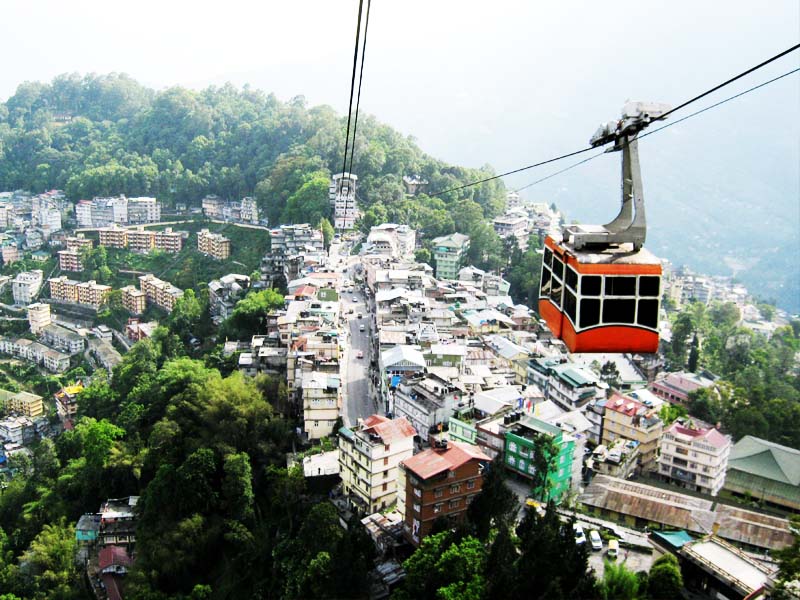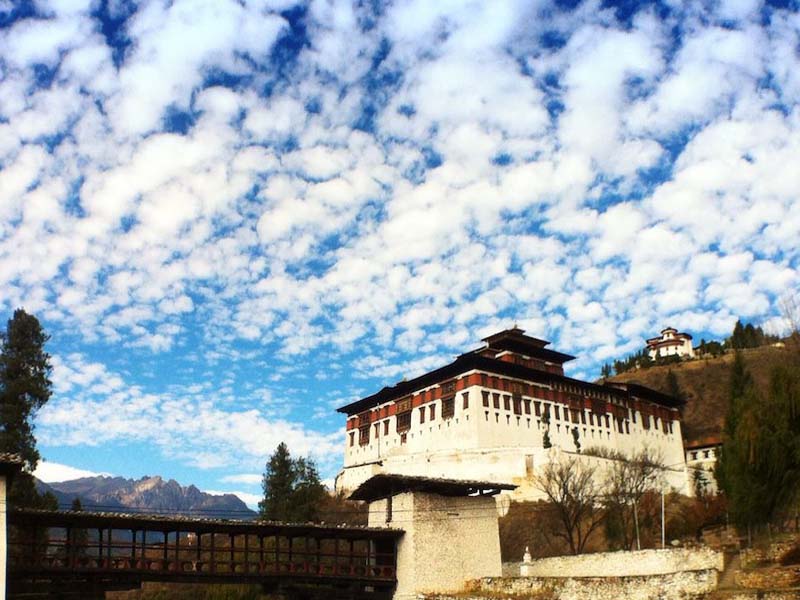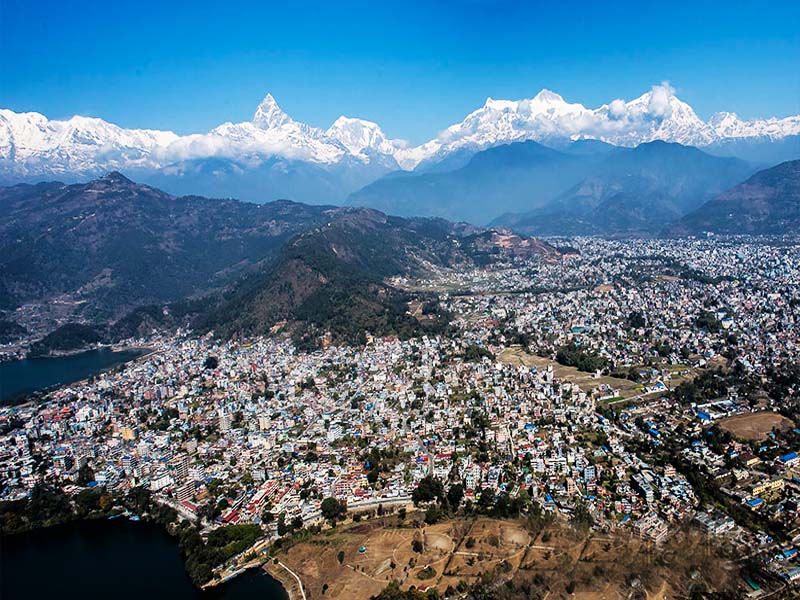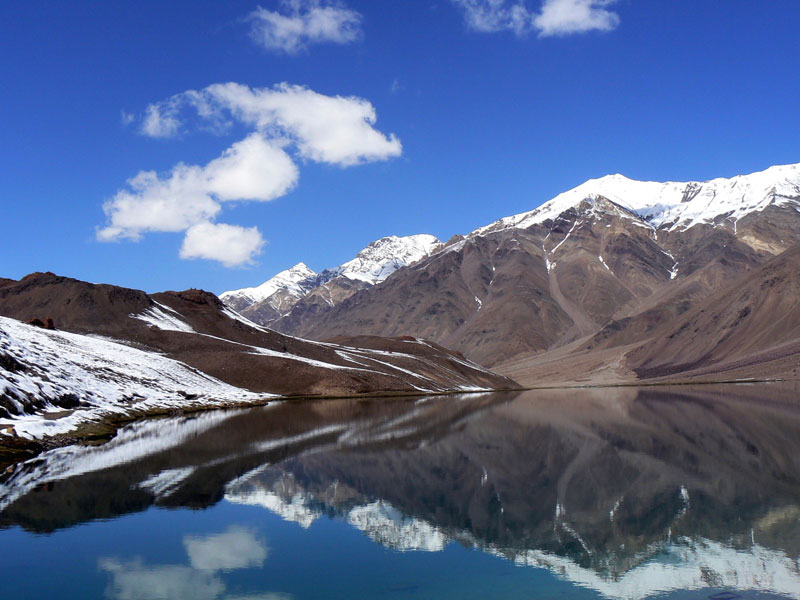DAY 01 : PARO – THIMPU
Drive from Paro to Thimphu: The distance of about 65kms from Paro town takes
little less more than 1 hour. Drive south following Pachu River to the river
confluence at Chuzom, which is also the hub of road network going to Paro, Ha,
Thimphu and Phuntsholing. From Chuzom, the drive takes about 1 hour, staying
close to the Wangchu River in the valley floor, as you pass through villages and
suburbs to the capital, Thimphu. En-route, you can stop to view Tachogang temple
and the nunnery at Sitsina.
Thimphu (2,300m): was a wooded farming valley until 1961, when it became
Bhutan's official national capital. The massive TashichoDzong, about 700 years
old, was carefully revamped in the 1960s by the late King JigmeDorjiWangchuk to
house the royal and main government offices. Even today, it still only has a few
streets and no traffic lights with estimated population of 150,000 people.
In Thimphu, Visit the school of arts and crafts, Indigenous Hospital, Folk
Heritage Musuem, Textile Museum, Memorial chorten (stupa) and handmade paper
factory.
School of arts & Crafts (open 9-5pm mon-fri and 9-1pm on Sat –with exceptions of
holidays and breaks). Commonly known as ‘the painting school’ is a national
institute where children attend six-year course that provides instruction in
Bhutan’s traditional arts and crafts called ZorigChuksum- meaning 13 crafts.
Indigenous Hospital or National Institute of Traditional Medicine (Open 9-5pm
Mon-Fri, 9-1pm on Sat) is government funded institute that facilitates research
of traditional medicine and practices. It prepares and dispenses herbal and
other medicines with clinic where doctors diagnose and prescribe traditional
medicines or treatments.
Heritage Museum: Heritage Museum is also a recent addition; housed in a
traditional home displays the living style of the Bhutanese family in 19th
century.
Textile Museum: A recent addition in the capital city, this museum displays the
colorful and intricately hand woven textile, both old and new.
Memorial Chorten: This landmark of Thimphu was built in 1974 in the memory of
third King, JigmeDorjiWangchuk, who is popularly regarded as Father of Modern
Bhutan. It is a four-storey tall white building, containing statues and
iconography of deities from complex tantric teachings and serves as an important
place of worship for Thimphu residents, as well as from other parts of the
country Paper Factory: Traditional papers were made from the daphne plant, using
simple methods. Overnight in hotel
DAY 02 : EXPLORE THIMPU CITY
After breakfast drive north through the suburbs for about 40min to Dodena and
walk up to Cheri Gompa Monastery (2850m) Cheri Gompa was first built in 1620 by
shabdrung and it was here that the central monastic body (Dratsang) was first
established. Many of the important priests of Drukpa Kagyul lineage passed
periods here, and so it is an important pilgrim site for Bhutanese. During the
weekends, many Bhutanese are seen climbing up the hill from Dodena (2,600m),
where the road ends. Cross a wooden cantilever bridge and climb up the hill with
moss-laden pine, fir and rhododendron trees, that takes little over 1 hour.
Return to the road.
Picnic lunch will be serving. After lunch drive back to
Thimphu city go to hotel relax for some time.In the evening visit Thimphu Tashi
chhe Dzong. Thimphu Dzong is very important. This Dzong is summer resident for
100 monks and in winter 1000 monks go to Punakha valley for winter resident.
This tradition is practice from long time ago. Inside the Dzong there is very
important temple where king of Bhutan crown.4th and 5th king was crown in
Thimphu Dzong.1st and 2nd king was crown in punakha Dzong and 3rd king was crown
in Paro Dzong.Overnight in hotel.
DAY 03 : THIMPU – PUNAKHA - WANGDI
Drive from Thimphu to Punakha: The drive from Thimphu (75Kms) takes about 3
hours. The road climbs from Thimphu to Dochula Pass (3050m) and descends through
ever changing forests into semi-tropical valley of Punakha at around 1250m,
En-route stop at dochula Pass(3050m) where you can view the estern Himalayas,
including Bhutan’s higest mountain, GangkharPunsum(7550m).
PunakhaDzong: or PungthangDechenPhodrang "Palace of Great Happiness” is located
on the confluence of two rivers, the Pho and Mochu. It was built in 1637 by
ShubdrungNawangNamgyal and following the ancient traditions, it serves as winter
residence for chief abbot (Je-khenpo) and the monks of Central Monastic Body,
who return to Thimphu in the summer.
Punakha and Wangdue, although two separate districts, are located in one valley
(20km or ½ hrdrive apart) OvernightPunakha.Sightseeing includes
ChimiLhakhangWangduephodrangDzong.
ChimiLhakhang: a monastery and fertility temple dedicated to Lama DrukpaKuenley,
a Tibetan Buddhist saint known popularly as “the divine madman” and considered a
folk hero in Bhutan for his unconventional ways. DrukpaKuenley originally built
a chorten on the site in the 14th century, on which a temple was later built in
15th century. The temple, flanked by nearly 100 tall prayer flags, sits atop a
picturesque hill. It has long been a pilgrimage site for childless couples. This
easy walk takes about ½ hour each way. Punakha and Wangdiphodrang:Punakha and
Wangdue, although two separate districts, are located in one valley (20km/ ½ hr
drive apart) and they are at the lower elevation of about 1,250m with pleasant
winters. Cactuses, Oranges, bananas and sub-tropical plants are found here.
Punakha was once the winter capital of Bhutan, the tradition that is still held
by the Central Monastic body.
WangdiphodrangDzong:ShubdrungNawangNamgyal in 1638 had built this massive
fortress sitting on a hilltop at the confluence ofPunakha Chu and Tang Chu
Rivers. It is built in the shape of a sleeping bull. Wangdi festival is
celebrated here in every autumn season for three days. Overnight in hotel.
DAY 04 : WANGDI - TRONGSA
Drive to Trongsa via Wangdue valley. From Wangdue, the road gradually winds up
about 2 hours, almost till Pele La Pass (which divides central from western
Bhutan) crosses the Black Mountain. Before reaching to pass the road diverges
and we take the road least traveled by. This eventually leads into the beautiful
hiddenPhobjikha Valley. Phobjikha is part of conservation area with in Black
Mountain National Park. It is the winter home of migratory Black Necked Crane.
Gangtey is the name of the Monastery that sits on top of a conical hill in the
middle of the valley. It is also one of the oldest and largest monasteries in
western parts of Bhutan. Due to conservation effort, there is no electricity in
the valley. Picnic Lunch will be provided en-route at ChendbjiChorten. After
lunch continue drive to Trongsa for another 2 hours. Upon arrival in Trongsa,
visit TrongsaDzong if time permits. This is one of the largest Dzong (fortress /
monastery) and it is one of most impressive fortress of its kind in the Kingdom.
In the evening stroll around the town of Trongsa. Overnight at hotel.
DAY 05 : TRONGSA – BHUMTHANG
After breakfast drive to Bumthang. The distance of about 68 kms .It will take3
hour drive across Yotong La pass (3400m) and descend into Chhume valley, the
first of the four valleys in Bumthang District. Visit the Yathra(wool textile
with deep vegetable dyes) weavers at the village of Zungney. After lunch,
explore the valley; visit Swiss farm area and town center. Overnight at hotel.
DAY 06 : EXPLORE BHUMTHAN
This valley Bumthang is often referred to as the cultural center of the Kingdom
and countless legends surround the area. This is the place where Guru Rimpoche
first visited in 746AD. The present Royal family traces their ancestry back to
the famous saint, Pemalingpa, which was from this region. Sight seeing includes
visit to KurjeLhakhang (where the saint Padmasambhava subdued a local demon and
left his body imprint on a rock), then Jakardzong (the fortress of white bird)
built in 17th century by Tenzin Rabgay (the fourth Desi or the temporal ruler),
Tamshinglhakhang built in 1501 by TertonPemaLingpa (the religious treasure
discoverer).
Then visit kunchosumlhakhang, JambayLhakhang, one of oldest
monasteries of Bhutan, dating from the introduction of Buddhism in Bhutan,
Wangdicholing Palace was the first Palace for the royal family where our 1st and
2nd king was brought up there. In the evening stroll around in the town of
Chamkhar.Overnight at hotel.
DAY 07 : JAKAR – NAGANG LHAKHANG
The Bumthang Cultural trek begins and the first day will be an easy and relaxing
one. This 5 to 6 hour trek along the ChamkharRiver brings us through many
villages and settlements and also some temples. At the end of the day, camp at a
village which is at an altitude of about 2900m.
DAY 08 : NAGANGLHAKANG - UGYENCHILING
The second day of our trek leads us to the Phephela pass (3340m). Then descend
to Tang valley, finally arriving at Ugyencholing village, our camp site.
Altitude: 2850m, walking time 7-8 hours.
DAY 9 : UGYENCHOLING – BHUMTHANG
Take a refreshing morning walk up to the UgyenCholingDzong. After visiting the
dzong and the surrounding village, drive back towards Jakar. En-route visit the
legendary "burning lake" (Mebartsho), which is generally regarded a very holy
and sacred place for the Bhutanese. Trek ends here. Drive to Bumthang.
Overenight in hotel.
DAY 10 : BHUMTHANG – WANGDI –PUNAKHA
The drive from Bumthang to Punakha will take approximately 8 hours.Ovenight in
Hotel.
DAY 11 : PUNAKHA - PARO
Paro: is one of the most beautiful valleys in the country with Bhutan’s only
airport located here, among the terraced fields, and elegant farm houses. Willow
trees line many of the roads, contrasting with bright colors of the fields and
the most popular and important sites also found within Paro district. Paro town
(2,280m) is still a small with one main street and less than one hundred small
family-run shops.
RinpungDzong: meaning "fortress of the heap of jewels". Built in mid 17th
century, it now serves as the administrative and judicial seat of Paro district
and residence for the 200 monks of Paro. It is also the venue for Paro festival
held in the spring. Several years ago, the colorful movie Little Buddha was
filmed here. KyichuLhakhang: Tibetan King SongtsenGompo in the 7th century
miraculously built 108 temples, along with Jorkhang in Lhasa. Kyichu is
considered to be one of them and is one of the oldest temples in Bhutan.
Overnight in hotel.
The drive from Bumthang to Punakha will take approximately 8 hours.Ovenight in
Hotel.
DAY 12 : PARO VALLEY EXPLORE
After breakfast drive to Haa valley (Day excrussion).You will have beautiful
drive through the forest crossing the chelela(pass-3900m).Stop on the pass to
take good photo of the paro valley and the Himalayas,if weather is
clear.Continue drive down the valley.Visit Karpo and Nagpo Lhakhang(Temple) date
back to 7 century.Visit Haa town and explore the valley.In the evening drive
back to Paro.Overnight in hotel.
DAY 13 : PARO - HIKE TIGERNEST
Drive to famed Taktsang (Tiger’s lair) monastery. Taktsang monastery is located
on the face of a 1,000m seemingly impossible sheer, vertical cliff, above
Parovalley. The trail begins near the Satsam(2650m) and climbs steeply uphill to
the Cafeteria (2,940m), an area of exposed ridge with panoramic view of
Takstang. This takes little more than an hour. (Ponies are provided on request
to ride up till this Cafeteria, but rest of way, including return downhill must
be on foot).
You can get a good view from the Cafeteria or hike further uphill
for another hour or so to the temple itself. There are several other temples and
sites within the vicinity. Lunch is served at the tea house. The return trek to
the road head is quite steep downhill, where you will be met by the
transport.Overnight in hotel.
DAY 10 : DEPARTURE
After breakfast your guide will take you to the airport for your farewell.
Tashi Delek !





